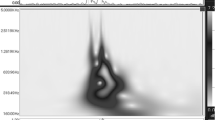Abstract
Haemodynamic performance of bileaflet mechanical heart valves can be severely affected by the formation of thrombotic deposits. Hence, early detection of thrombi is fundamental for a prompt diagnosis and adequate therapy. This article aims at designing a novel diagnostic and prognostic tool able to detect valvular thrombosis at early stages of formation, i.e., before the appearance of critical symptoms in patients who can be effectively treated by pharmacological therapy, preventing re-operation. This approach relies on the acquisition of the acoustic signals produced by mechanical heart valves in the closing phase; the corresponding power spectra are then analysed by means of artificial neural networks trained to identify the presence of thrombi and classify their occurrence. Five commercial bileaflet mechanical heart valves were investigated in vitro in a Sheffield Pulse Duplicator; for each valve six functional conditions were considered, each corresponding to a risk class for patients (one normofunctioning and five thrombosed): they have been simulated by placing artificial deposits of increasing weight and different shape on the valve leaflet and on the annular housing; the case of one completely blocked leaflet was also investigated. These six functional conditions represent risk classes: they were examined under various hydrodynamic regimes. The acoustic signals produced by the valves were acquired by means of a phonocardiographic apparatus, then analysed and classified. The ability to detect and classify thrombotic formations on mechanical valve leaflet would allow ranking patients by assigning them to one of the six risk classes, helping clinicians in establish adequate therapeutic approaches.


Similar content being viewed by others
References
Fallon AM, Marzec UM, Hansonb SR, Yoganathan AP. Thrombin formation in vitro in response to shear-induced activation of platelets. Thromb Res. 2007;121:397–406.
Blome-Eberwein SA, Mrowinski D, Hofmeister J, Hetzer R. Impact of mechanical heart valve prosthesis sound on patients’ quality of life. Ann Thorac Surg. 1996;61:594–602.
Donnerstein RL. An in vivo analysis of ultrasonic signals created by closing bileaflet mechanical heart valves. In: Engineering in Medicine and Biology Society, 1996. Bridging Disciplines for Biomedicine. Proceedings of the 18th Annual International Conference of the IEEE, vol 3, 1996. p. 1343–44.
Bagno A, Anzil F, Tarzia V, Pengo V, Ruggeri A, Gerosa G. Application of wavelet analysis to the phonocardiographic signal of mechanical heart valve closing sounds. Int J Artif Organs. 2009;32:166–72.
Sugiki H, Shiiya N, Murashita T, Yasuda K. Bileaflet mechanical valve sound analysis using a continuous wavelet transform. J Artif Organs. 2006;9:42–9.
Sugiki H, Shiiya N, Murashita T, Kunihara T, Matsuzaki K, Kubota T, Matsui Y, Sugiki K. Wavelet analysis of bileaflet mechanical valve sounds. J Artif Organs. 2007;10:16–21.
Sugiki H, Murashita T, Shiiya N, Matsui Y, Sugiki K. Wavelet analysis of valve closing sound detects malfunction of bileaflet mechanical valve. J Artif Organs. 2008;11:29–37.
Bagno A, Anzil F, Buselli R, Tarzia V, Pengo V, Gerosa G. Is the analysis over the time domain or over the frequency domain significant for the detection of bileaflet mechanical heart valve dysfunction? Ann Thorac Surg. 2009;87:986–7.
Bagno A, Buselli R, Anzil F, Tarzia V, Pengo V, Ruggeri A, Bottio T, Gerosa G. In vitro characterization of bileaflet mechanical heart valves closing sound. 35th annual computers in cardiology conference, 14–17 September, Bologna, Italy, 2008.
Bagno A, Anzil F, Buselli R, Pesavento E, Tarzia V, Pengo V, Bottio T, Gerosa G. Bileaflet mechanical heart valve closing sounds: in vitro classification by phonocardiographic analysis. J Artif Organs. 2009;12:172–81.
Tarzia V, Susin FM, Buselli R, Cambi A, Bottio T, Pengo V, Gerosa G, Bagno A. Bileaflet mechanical heart valves thrombosis: in vitro detection by artificial neural networks. Valves in the heart of the big apple VI: evaluation & management of valvular heart disease 2010, 15–17 April, New York City, USA, 2010.
Razzolini R, Gerosa G, Leoni L, Casarotto D, Chioin R, Dalla Volta S. Transaortic gradient is pressure-dependent in a pulsatile model of the circulation. J Heart Valve Dis. 1999;8:279–83.
Acknowledgments
Authors thank Dr. Andreas Brensing (CardioSignal GmbH) for allowing the use of Myotis 3C as referred to in this paper. This work has been partly supported by grant from the University of Padova (Progetto di Ricerca di Ateneo no. CPDA071548; Progetto ex 60% 2010).
Author information
Authors and Affiliations
Corresponding author
Rights and permissions
About this article
Cite this article
Romata, C., Susin, F.M., Cambi, A. et al. Comparative classification of thrombotic formations on bileaflet mechanical heart valves by phonographic analysis. J Artif Organs 14, 100–111 (2011). https://doi.org/10.1007/s10047-011-0562-z
Received:
Accepted:
Published:
Issue Date:
DOI: https://doi.org/10.1007/s10047-011-0562-z




